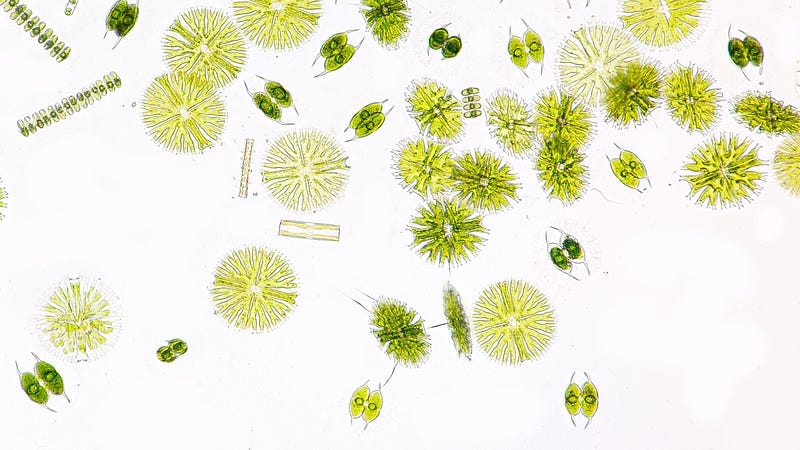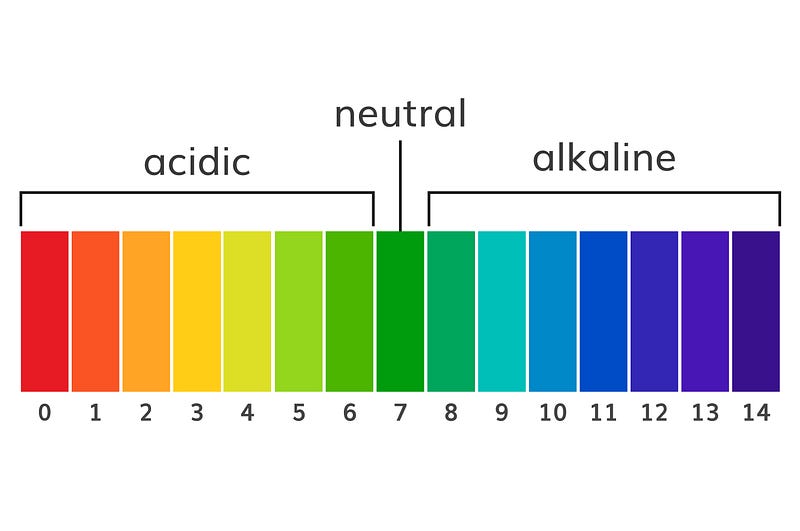# The Interplay Between Climate Change and Oceanic Sulfur Emissions
Written on
Chapter 1: Understanding Ocean Sulfur Emissions
When discussing greenhouse gases that contribute to climate change, carbon dioxide (CO2) usually takes center stage. These gases capture heat radiated from the Earth's surface. While CO2, primarily released through fossil fuel combustion, is the most recognized greenhouse gas, methane plays a significant role as well (for more information, refer to Chapter 6 of “A Guide to a Healthier Planet”).
However, it is crucial not to overlook other gases, particularly sulfur dioxide (SO2). Unlike CO2, SO2 emissions lead to a cooling effect on our planet. This occurs because SO2 interacts with other molecules in the stratosphere, forming tiny droplets that reflect incoming solar radiation away from Earth, thereby maintaining cooler surface temperatures.

The oceans are vital contributors to sulfur emissions, accounting for around 80% of global output. This process, known as sulfur flux, describes the natural exchange of sulfur stored in the ocean with the atmosphere. Marine organisms, such as phytoplankton and corals, release sulfur in the form of dimethylsulfoniopropionate (DMSP). Microorganisms then convert DMSP into dimethylsulfide (DMS), which can escape into the atmosphere and ultimately form SO2.
As environmental conditions shift due to climate change, this sulfur flux is also affected. Two major changes influencing our oceans are rising temperatures and increasing water acidity (for further details, see “3 Tragic Consequences of Global Warming on Ocean Biodiversity”). Below, we explore how these factors alter sulfur emissions:
Section 1.1: The Effect of Rising Temperatures
Climate change's impact on sulfur emissions begins with rising ocean temperatures. Warmer waters can have mixed effects on phytoplankton growth. For instance, higher temperatures may enhance the rate at which they convert sunlight into energy, promoting faster growth. Conversely, warmer surface waters can hinder nutrient mixing from deeper layers, resulting in reduced nutrient availability and slower phytoplankton growth.
Among the roughly 25,000 identified phytoplankton species—and potentially 100,000 in total—the response to rising temperatures can vary widely. These variations depend not only on environmental changes but also on the specific temperature sensitivities of different phytoplankton species. Since phytoplankton are key producers of sulfur compounds, alterations in their populations due to temperature changes can significantly influence oceanic sulfur emissions.

Additionally, rising ocean temperatures lead to coral bleaching, a critical indicator of reef health. The vibrant colors of coral reefs indicate their vitality, while bleaching signifies stress and potential death of corals. The microorganisms that share a symbiotic relationship with corals and give them their color are particularly vulnerable to temperature increases. When these organisms die off, the corals lose their color and, consequently, their ability to contribute to sulfur emissions. Coral reefs, which have sulfur concentrations up to twice that of surrounding waters, play a crucial role in maintaining sulfur output; thus, their degradation reduces overall sulfur emissions and diminishes the cooling effect.
Section 1.2: Impact of Ocean Acidification
The second major influence on sulfur emissions is ocean acidification, which occurs as CO2 from the atmosphere is absorbed by ocean waters, lowering the pH. This phenomenon severely affects carbonate-dependent species, including corals. As previously mentioned, corals are significant sources of sulfur compounds, and declining reef health due to acidification results in reduced sulfur emissions and a diminished cooling effect.

This issue is particularly pronounced in polar regions, where cooler waters can absorb more CO2 than warmer waters. Consequently, acidification can restrict algal growth and sulfur production during critical seasonal phytoplankton blooms. Moreover, regional variations in acidification effects highlight the complexity of sulfur emission dynamics.
Conclusion
In summary, climate change significantly alters natural sulfur emissions through rising ocean temperatures and increased acidity. These environmental shifts can either stimulate or hinder the growth of sulfur-producing organisms, depending on various factors. Positive changes may lead to an increase in sulfur emissions and enhanced cooling effects, while negative impacts could result in reduced emissions, exacerbating global warming.
How We Can Take Action
To mitigate ocean warming and acidification, consider these practical steps:
- Limit CO2 emissions by transitioning to renewable energy sources.
- Reduce energy consumption (for over 100 ideas, see “How To Reduce The Impact Of Increasing Energy Prices”).
- Opt for carpooling instead of traveling separately.
- Choose train travel over driving.
- Plan vacations closer to home rather than flying internationally.
- Support vegetarian dining options over meat-centric restaurants.
About the Author
Dr. Erlijn van Genuchten is a globally recognized expert in environmental sustainability. As a science communicator, she aids scientists in the fields of nature and sustainability in amplifying their research outreach. Her efforts, including her book "A Guide to A Healthier Planet" published by Springer Nature, aim to inspire collective action towards a sustainable future.
The Biggest Science Story of the Week - This video discusses the latest breakthroughs in science and their implications for environmental sustainability.
Carbon Cycle: Greenhouse Gases, Photosynthesis, Respiration, C Burial, & More! - A comprehensive overview of the carbon cycle, detailing the role of greenhouse gases and the interconnectedness of Earth's systems.
This article draws from the scientific publication:
Jackson, R., & Gabric, A. (2022). Climate change impacts on the marine cycling of biogenic sulfur: a review. Microorganisms, 10(8), 1581.